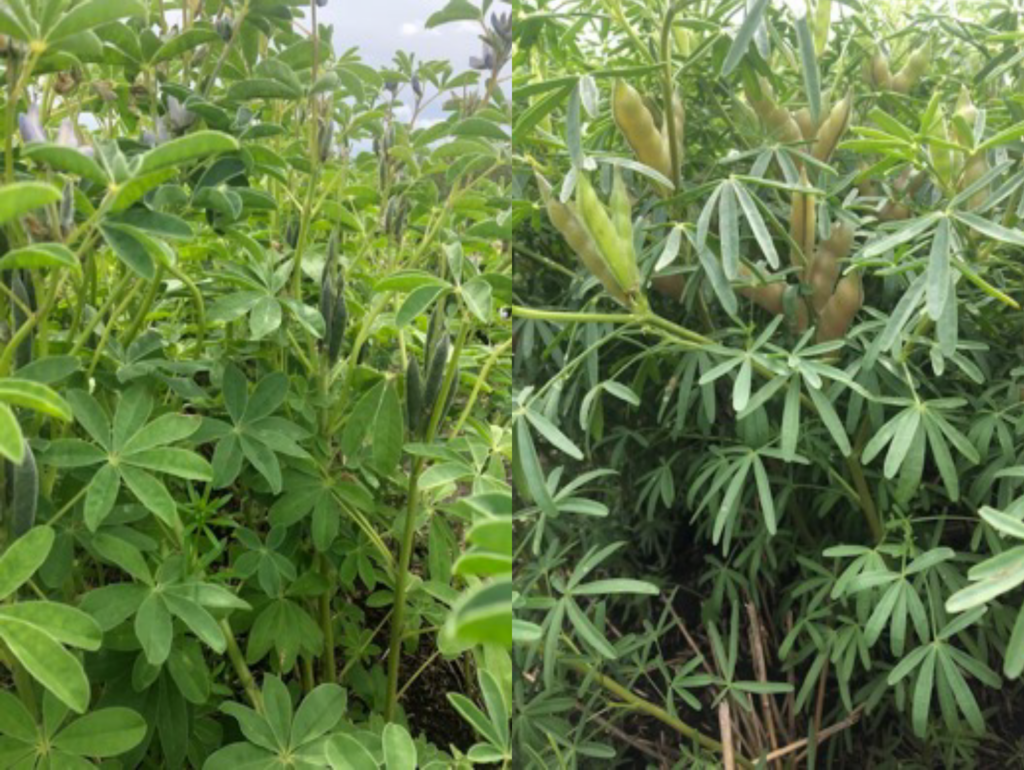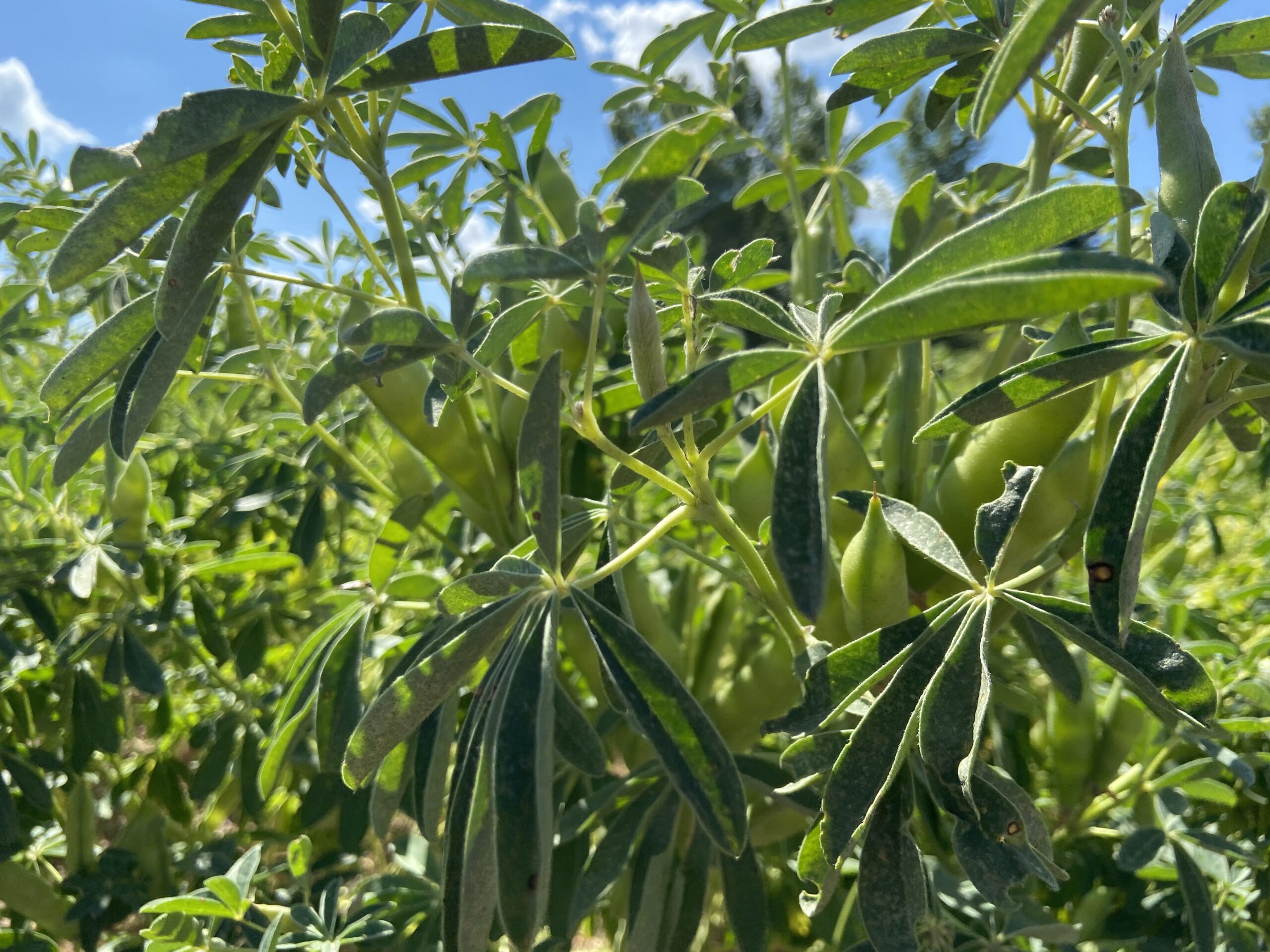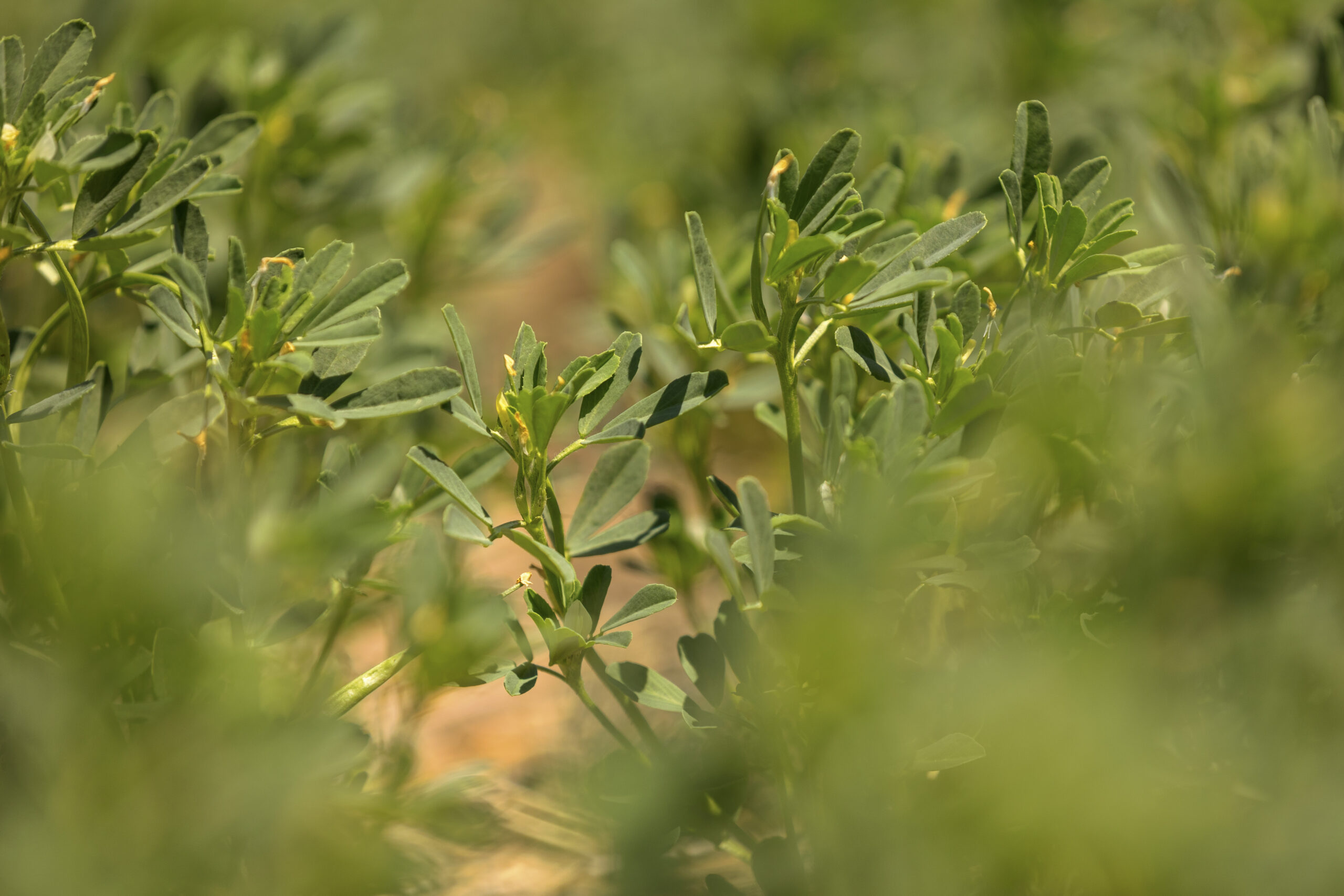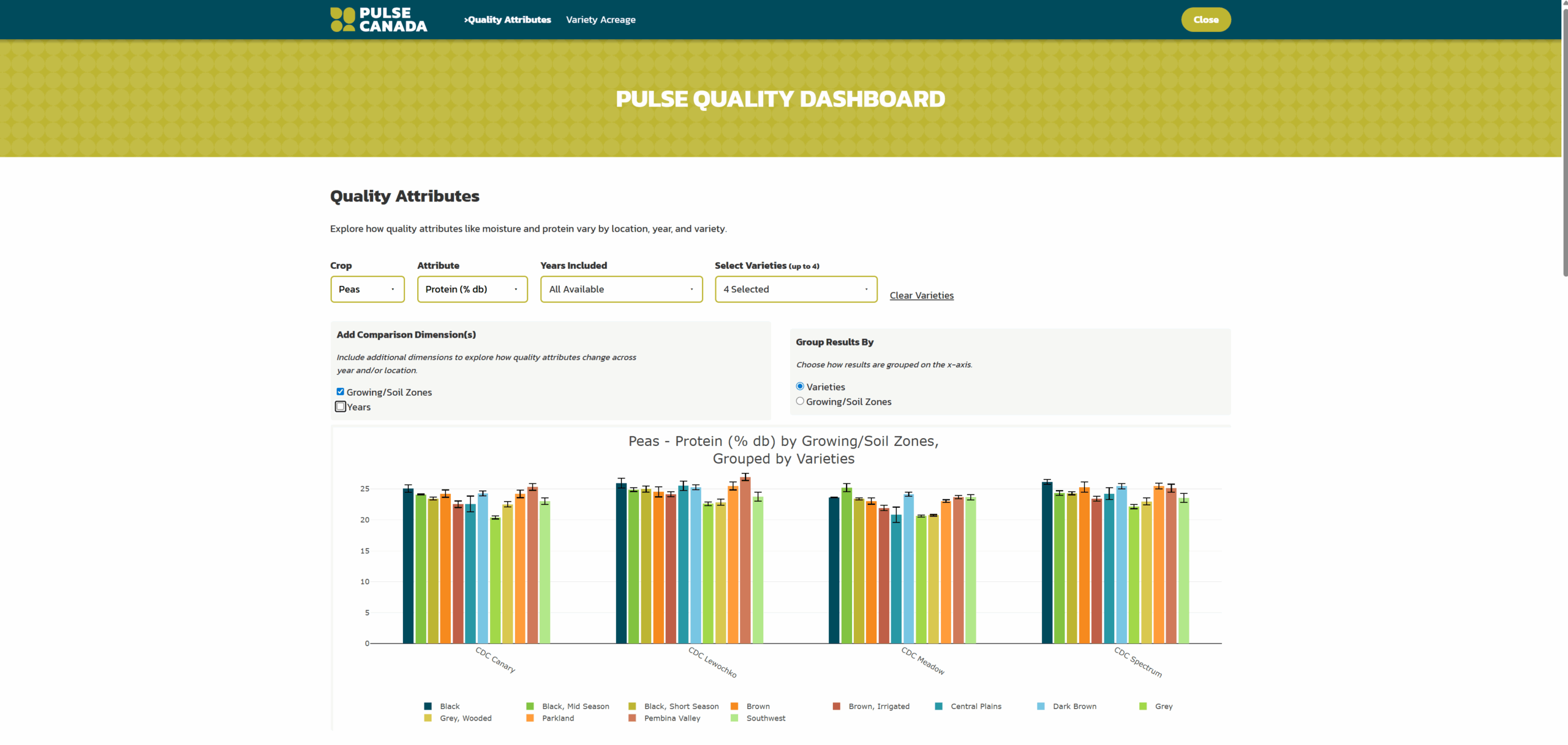Breeding and ingredient research on lupin, a pulse with an ancient lineage tracing back to Incan South America, has been underway in Europe for the last century. Canadian agronomists have been exploring the viability of lupin as an addition to pulse crop rotations in western Canada. Lupin is a pulse to watch over the next several years.
You may know lupin as the perennial flowers growing in garden beds across the prairies. Mark Olson, leader of several lupin- focused research projects, warns that those lupin contain high levels of alkaloids, making them extremely toxic. The edible species that are being considered in Canada are annual species; Lupinus albus, sweet white lupin, and Lupinus angustifolius, narrow leaved blue lupin.
“Breeding and research of lupin has been happening in Germany since the late 1920s to lower alkaloid levels (Reinhold von Sengbusch) and to create softer seeds and non-shattering pods,” says Olson. “Depending on the species, the seeds of lupin contain 30–40% protein, 25% fibre, 6–8% oil and 2–5% starch. This high level of protein with very little starch makes the crop appealing for protein fractionators struggling to find a market for starch by- products.”
“Lupin is commonly substituted for soybean in the feeding of cattle, sheep, pigs, poultry and farmed fish Europe, Asia, and Australia. Studies in South Korea show that feeding dairy cattle lupin increases milk production and fat content,” says Olson. The plant also has potential in bio-industrial applications and for human consumption. A company in Germany has developed lupin protein isolate, lupin oil and lupin flour, and has several lupin-based products on the market, including a line of award-winning dairy alternatives including ice cream.
Olson notes that lupin’s high protein content makes it an excellent raw product, with opportunities to be explored in gluten free products, as an egg substitute in baked goods, and as a flour in pastas and noodles. “Uses of commercial production of lupin in Canada include pickled and canned lupin, as well as using the flour as a substitute for chickpea in hummus and in high protein pancake mix. Lupin flakes are available commercially for use in salads, dips, and vegetarian dishes as a way to increase daily dietary fibre and protein. Lupin has also been tested successfully as fermented food products such as tempeh, tofu and miso. It can basically be used in the same way as soybeans or peas.”
Growing Lupin in Saskatchewan

Source: Mark Olson
Like its pulse relatives, lupin is an efficient nitrogen fixer and eliminates the requirement for a nitrogen application, the manufacturing and application of which contributes to greenhouse gas emissions, and which is also costly. L. angustifolius has a similar growth cycle to faba bean, requiring 110–120 frost free days, while L. albus has a similar growth cycle to soybeans, with a longer maturity (130 days+) cycle.
Lupin is a moisture-loving crop that is sensitive to high pH soils like those found in many parts of Saskatchewan. Soils above a pH 7.2 should be avoided to avoid iron deficiency chlorosis (IDC) and poor yields. Non-calcareous black and thin black soils throughout Saskatchewan could potentially work for lupin; drier areas, such as the drought-tending Palliser triangle are not recommended.
Greenhouse trials with ‘Dieta’ (white lupin) and ‘Boregine’ (narrow- leaved blue lupin) varieties have shown resistance to Aphanomyces root rot. The plants have a deep tap root and strong stem – so much so that producers need to ensure their sickle knives are sharp (and use double density knife guards) on their straight cut headers to avoid difficult cutting at harvest time.
Where soil pH is lower and moisture is traditionally consistent throughout the growing season, lupin could be a pulse rotation option. Field trials have offered growers some important pointers on successful lupin production. Lupin germinates epigeally like soybean and dry bean rather than hypogeally like peas or faba. Because the cotyledon comes out of the ground as the seedling grows, it needs to be planted relatively shallowly (no deeper than 1 ½ inches). “A couple of our field trial cooperators thought they could take advantage of soil moisture by planting lupin deep like you would peas or faba beans, but many seedlings weren’t able to emerge, and emergence was 50%,” says Olson.
Building Commercial Seed Capacity for Lupin
The last year of drought has resulted in a limited lupin seed supply in Canada. It will take two or three years, to get seed supplies to levels for commercial grain production, but Olson is optimistic for the long-term potential for this crop. He says, “We can start small as we learn about lupin. It has never really been grown to any large extent in Canada. We want to make sure everyone is set up for success and follows best management practices – and our recommendations will continue to evolve as we learn more.”
Published April 2022



